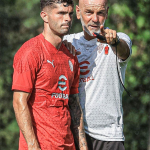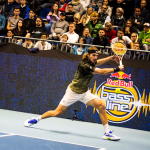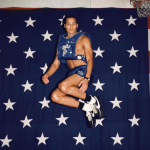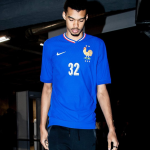
Are sports brands deciding the football market?
More and more footballers have moved to clubs with which they share the same technical sponsor
August 9th, 2023
Sponsorship is, for almost any athlete plying their profession full-time, a necessary component, the financial life blood that helps facilitate brand development and provides financial support when needed. Additionally, sponsorship fuses together athlete and corporation to create a marketing movement that mutually benefits all participants. Perhaps nowhere is this more overt than in the realms of professional football, because tapping into a seemingly infinite market is clearly enticing for major and minor sports brands. New Balance are perhaps the most recent brand to successfully foray into football alongside Castore on a smaller scale, whilst Umbro and Kappa have seemingly moved away from the centre stage. Yet, for much of its modern history, football has been dominated by three major sports brands: Nike, adidas, and PUMA.
Cristiano Ronaldo's and Messi role
The first two, perhaps the two most dominant horses in our three horse race, have played undeniably significant roles in shaping the modern landscape of global football. Spurred on by their star athletes, Cristiano Ronaldo and Lionel Messi, the Nike versus adidas battle on the pitch has produced moments of greatness rarely if ever matched. Both Ronaldo and Messi could argue indefinitely as to why they’re the greatest of all time, and part of their sustained success stems from consistent support from major sponsors and the legacy building they have been able to achieve. Ronaldo for Nike and Messi with adidas have moulded themselves in their own image, even surpassing the teams they played for in prestige and recognisability. A fierce competition that has lasted for more than a decade and which may have reached its conclusion this season.
Yet, only recently have both players moved to clubs that are actually sponsored by the brands they’re the face of. When thinking of Cristiano Ronaldo, the likelihood is the image of a devilishly white Real Madrid kit, adorned with gold features, and an adidas logo springs to mind - Manchester United are also sponsored by the German giants. Likewise, Lionel Messi conjures up imagery of the equip blaugrana finished with a candescent yellow Nike tick. Now, Cristiano set what has become a global footballing movement into action having moved to Al Nassr FC, a club who have their kits made by Nike, whilst Messi has moved to the sunny shores of Miami, joining up with David Beckham and a host of other, former Barca players in an attempt to build a footballing legacy in the MLS - again, Inter Miami FC have their kits made by adidas - given the significance of David Beckham and Lionel Messi to the adidas brand, this is unsurprising. Worth a mention that, for both Ronaldo and Messi, they have adorned kits made by their own sponsors when they have attained international success.
These moves from football’s two greats seem to have aligned with what their main sponsors would have wanted For Nike, a foray into Saudi Arabia makes vast amounts of sense. Being carried by the heft of Ronaldo means the brand is certain to succeed. Likewise, Messi playing in an adidas kit, pictured alongside Beckham, and drawing huge crowds from across the United States is almost exactly what the german brand would’ve wanted: the major player in the world’s largest economy - it is a huge marketing coup. This then prompts the question - are sponsors becoming increasingly involved in where their athletes play? The answer is seemingly, yes.
Christan Pulisic to Milan example
Stepping out from the duopoly of Nike and adidas for a second encourages PUMA into the spotlight. The brand has been a direct rival of adidas since its inception, even being the more significant of the two until the turn of the millennium. Neymar Jr. and Thiago Silva aside, arguably the most significant PUMA athlete at current is Christian Pulisic given his market potential and move to AC Milan. Following in the footsteps of Messi and Ronaldo, Pulisic has joined a new club that shares a sponsor with him - opting to join the Rossoneri over a move to Lyon. Of course, there is a debate to be had as to which club would offer more to Pulisic, although most would likely suggest that AC Milan is a more prestigious club. Declan Rice is another high-profile player to have made a summer switch, a five-mile move north from West Ham to Arsenal. Once again, Rice being an adidas athlete has joined a side sponsored by the same brand and once again, the likelihood is, much like Pulisic, the move was favourable and ultimately the player has the final decision. Nevertheless, adidas and Arsenal, perhaps better than any other club-sponsor duo (Dortmund-Puma being the other), have formed a unique identity that has enabled Arsenal as a club to flourish, Rice fits this perfectly.
Of course, this stems from a connected world, a 24/7 audience. Players are not simply part of a football team, they’re global marketing icons able to attract attention and ultimately command respect, helping legitimise the quality of the brand fortunate enough to sponsor them. Key sponsors such as Nike, adidas, PUMA, New Balance etc. have all worked on personalising the corporation, adding well-known faces to their portfolio gives them a stronger link with their audience and customer base. Brands have personalities, largely developed through the players they sponsor, and if a brand is fortunate enough to have an athlete play for a side they also sponsor, they’re in a commanding position. Players choose the move, usually. However, as brands look for ways to innovate and remain at the forefront of the collective footballing consciousness, we may see certain brand stars joining clubs already aligned with the identity of their sponsor. Football is undergoing a major change, the pendulum of power is slowly swinging, and this is simply an extension of that.












